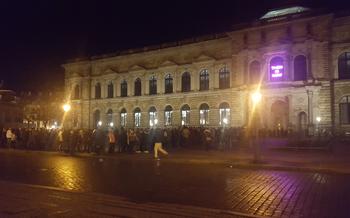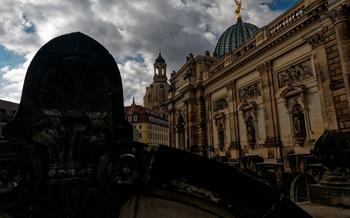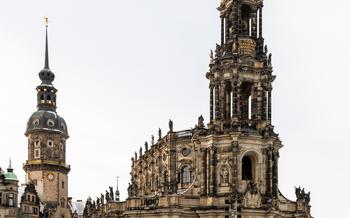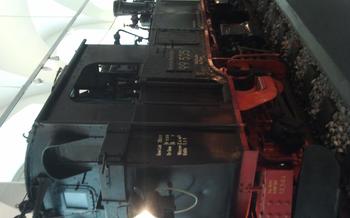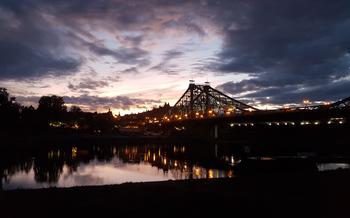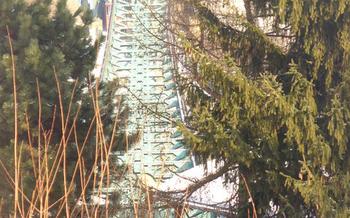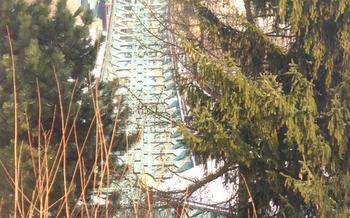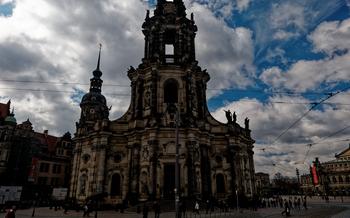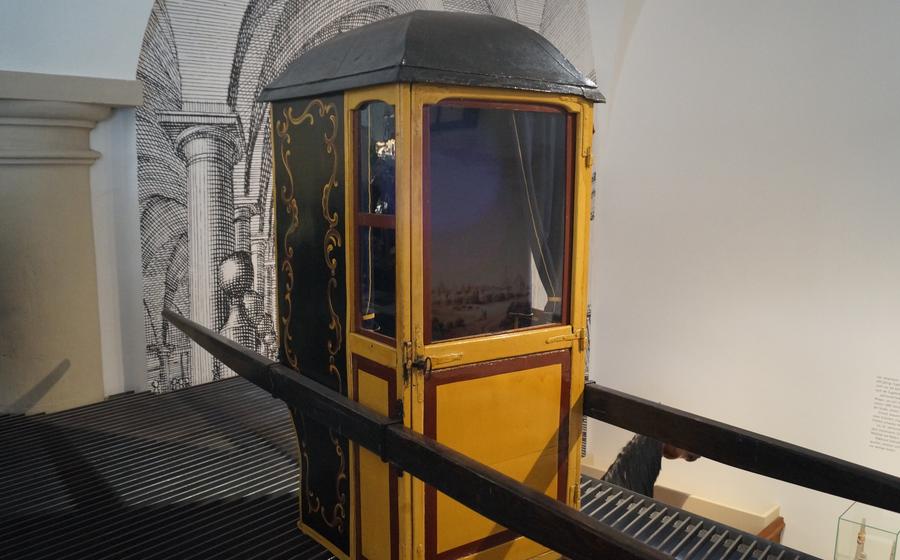
Dresden Transport Museum
- Dresden Transport Museum: A Journey Through Time and Innovation
- Location and Accessibility
- Museum Highlights
- Interactive Experiences
- Historical Significance
- Collections and Exhibits
- Museum Tours
- Educational Programs
- Events and Activities
- Photography and Videography
- Accessibility and Amenities
- Hours of Operation and Admission
- Nearby Attractions
- Insider Tip: Hidden Gems
Dresden Transport Museum: A Journey Through Time and Innovation
The Dresden Transport Museum is a fascinating journey through the history of transportation technology. Located in the heart of Dresden, Germany, the museum houses a remarkable collection of vehicles and artifacts that showcase the evolution of transportation from the early days of steam locomotives to the modern marvels of aviation and space exploration.
Founded in 1956, the museum is a testament to the rich transportation heritage of Dresden, a city that has played a pivotal role in the development of various modes of transport. Through its comprehensive collection and interactive exhibits, the museum offers visitors a unique opportunity to explore the history, science, and cultural significance of transportation.
At the Dresden Transport Museum, visitors can embark on a journey of discovery, learning about the people, inventions, and engineering feats that have shaped the way we travel. Whether you are passionate about locomotives, marvel at the elegance of vintage cars, or dream of soaring through the skies, this museum has something to offer everyone.
Location and Accessibility
The Dresden Transport Museum is conveniently located at Augustusstraße 1, 01067 Dresden, Germany. It is situated in the heart of the city, within walking distance of many other attractions, such as the Zwinger Palace and the Semper Opera House.
To get to the museum by public transportation, take tram lines 4 or 10 to the "Augustusbrücke" stop. From there, it is a short walk to the museum. Alternatively, you can take bus lines 62 or 85 to the "Zwinger" stop.
If you are driving, there are several parking garages nearby, including the Altmarkt-Galerie and the Centrum-Galerie. The museum also offers limited on-street parking in front of the building.
The Dresden Transport Museum is wheelchair accessible, with elevators and ramps throughout the building. Accessible restrooms are also available. Visitors with disabilities can request assistance from the museum staff if needed.
Museum Highlights
The Dresden Transport Museum boasts an impressive collection of iconic vehicles and artifacts that showcase the evolution of transportation technology. Among the highlights is the Saxon VII, a magnificent steam locomotive that represents the golden age of rail travel. This beautifully preserved engine, built in 1887, stands as a testament to the engineering prowess of the late 19th century.
Aviation enthusiasts will be thrilled by the museum's collection of historic aircraft and engines. From early gliders to modern jetliners, the exhibits provide a comprehensive overview of the development of flight. Visitors can admire the sleek lines of a 1930s biplane or marvel at the power of a massive turbofan engine.
The museum also features an impressive collection of ship models and maritime artifacts. These exhibits highlight the importance of water transportation throughout history, from ancient sailing vessels to modern cargo ships. Visitors can learn about the challenges of seafaring and the ingenuity of those who ventured out onto the world's oceans.
Interactive Experiences
The Dresden Transport Museum offers a range of interactive and engaging experiences for visitors of all ages. Children and adults alike can enjoy hands-on exhibits that allow them to explore various aspects of transportation technology. Virtual reality simulations and multimedia presentations provide immersive experiences that bring history to life. Workshops and guided tours offer unique opportunities to learn more about the museum's collection and the history of transportation in Dresden.
One of the most popular interactive exhibits is the "Driver's Seat." This exhibit allows visitors to take the controls of a virtual train and navigate through a realistic 3D environment. Participants can experience the challenges of driving a train and learn about the different factors that affect train operation.
Another highlight is the "Flight Simulator." This exhibit offers visitors the chance to pilot a virtual aircraft and experience the thrill of flying. The simulator features realistic controls and stunning visuals, providing a truly immersive experience.
For those interested in learning more about the history of transportation, the museum offers guided tours that provide in-depth insights into the museum's collection and the development of transportation technology. Tours are available in English and German, and advance booking is recommended.
Historical Significance
Dresden's rich history is intertwined with the evolution of transportation. As a major center of industry and innovation during the Industrial Revolution, the city played a pivotal role in shaping the landscape of transportation development. The Dresden Transport Museum serves as a testament to this legacy, showcasing the engineering marvels that revolutionized travel and trade.
The museum's collection reflects the city's contributions to various modes of transportation. Visitors can trace the evolution of steam locomotion through the iconic steam locomotive "Saxon VII," a symbol of Germany's industrial prowess. Aviation enthusiasts will be captivated by the exhibits showcasing historic aircraft and engines, highlighting Dresden's role in the early days of flight.
The museum also delves into the maritime history of the region, with a collection of ship models and artifacts that illustrate the importance of water transportation in shaping the city's development. These exhibits provide a glimpse into the ingenuity and craftsmanship that went into designing and building vessels that traversed rivers and seas.
By preserving and showcasing these artifacts, the Dresden Transport Museum offers visitors a unique opportunity to appreciate the historical significance of transportation and its profound impact on the development of Dresden and beyond.
Collections and Exhibits
The Dresden Transport Museum boasts a diverse and comprehensive collection of vehicles and artifacts that showcase the evolution of transportation technology. The locomotive collection is a highlight, featuring steam engines, diesel locomotives, and electric locomotives that played a crucial role in Germany's transportation history. Visitors can marvel at the iconic steam locomotive "Saxon VII," which was built in 1848 and is the oldest preserved locomotive in Germany. The museum also houses an impressive array of cars, from early models like the Benz Patent-Motorwagen to modern sports cars and electric vehicles.
The maritime exhibits showcase ship models, navigation instruments, and maritime artifacts that tell the story of Dresden's role in river and sea transportation. Visitors can learn about the development of shipbuilding techniques and the importance of waterways for trade and commerce. The aviation exhibits feature historic aircraft, engines, and artifacts that trace the history of aviation in Germany. Visitors can see up close the Heinkel He 111 bomber, which was used during World War II, and learn about the pioneers of aviation who shaped the industry.
In addition to the permanent collection, the museum also hosts special exhibitions and rotating displays that focus on specific transportation themes or historical events. These exhibitions showcase unique artifacts, rare vehicles, and immersive multimedia presentations that provide visitors with a deeper understanding of transportation's impact on society.
Museum Tours
The Dresden Transport Museum offers guided tours for groups and individuals, providing an in-depth exploration of the museum's highlights and hidden gems. Tours are available in German and English, with advance booking recommended to secure a spot. The knowledgeable and passionate guides bring the museum's collection to life, sharing stories and insights about the history, significance, and impact of the various vehicles and artifacts on display.
For a more immersive experience, visitors can opt for the virtual reality tour, which takes them on a journey through time, simulating the experience of riding in a steam locomotive or flying in a vintage aircraft. Multimedia presentations and interactive exhibits further enhance the tour experience, providing visitors with a deeper understanding of the museum's collection and the fascinating world of transportation history.
Educational Programs
The Dresden Transport Museum offers a range of educational programs designed to engage and inspire visitors of all ages. School groups can participate in guided tours, workshops, and interactive activities that bring transportation history to life. Families can enjoy hands-on experiences, storytelling sessions, and educational games that make learning fun and memorable.
The museum also hosts regular lectures, demonstrations, and workshops for adults, covering topics such as the history of aviation, the development of steam locomotives, and the impact of transportation on society. These programs provide a deeper understanding of the museum's collection and the broader history of transportation.
Educational resources and materials are available for teachers and parents, including lesson plans, activity sheets, and online resources. These materials are designed to support classroom learning and encourage further exploration of transportation-related topics.
Through its educational programs, the Dresden Transport Museum aims to inspire the next generation of engineers, innovators, and transportation enthusiasts. By fostering a love of learning and a fascination with the history of transportation, the museum contributes to the advancement of knowledge and the preservation of our cultural heritage.
Events and Activities
The Dresden Transport Museum is not just a static display of vehicles and artifacts; it is also a vibrant hub for transportation-related events and activities. Throughout the year, the museum hosts temporary exhibitions that delve into specific aspects of transportation history or showcase innovative new technologies. Special programs are organized for holidays and themed weekends, offering visitors a chance to engage with the museum's collection in a unique and interactive way.
One of the highlights of the museum's events calendar is the annual "Dresden Transport Days." This three-day festival celebrates all things transportation, with a variety of activities for visitors of all ages. There are live demonstrations of vintage vehicles, hands-on workshops for children, and guided tours led by experts in transportation history. The festival also features a marketplace where visitors can browse and purchase transportation-themed souvenirs, books, and memorabilia.
For those interested in learning more about the history and development of transportation, the museum offers a range of educational programs. There are lectures, workshops, and demonstrations on topics such as the evolution of the automobile, the history of aviation, and the role of transportation in shaping our world. These programs are designed for both adults and children, and provide a great opportunity to delve deeper into the fascinating world of transportation.
Photography and Videography
Capturing the Essence of the Museum's Collection
The Dresden Transport Museum welcomes photography and videography within its exhibition halls, providing visitors with a chance to capture the essence of its remarkable collection. To ensure the preservation of the artifacts and the safety of other visitors, a few guidelines must be followed.
Flash photography is strictly prohibited, as it can damage the delicate materials and finishes of the vehicles and artifacts on display. Instead, photographers are encouraged to use natural or ambient light, or to bring their own lighting equipment if necessary.
Videographers are permitted to record their experiences within the museum, but they must be mindful of not obstructing the pathways or disrupting other visitors. Tripods and monopods can be used, but they must be set up in a way that does not interfere with the flow of traffic.
While capturing the beauty and innovation of the museum's exhibits is encouraged, commercial photography and videography are not allowed without prior permission. Professional photographers and videographers must obtain a permit from the museum administration and comply with the museum's policies and guidelines.
For those seeking to capture truly exceptional shots, the museum offers unique opportunities for professional photography and videography sessions. These sessions can be arranged in advance with the museum staff, allowing photographers and videographers to access the exhibits during non-public hours and work with the museum's lighting experts to create stunning images and videos.
By following these guidelines and respecting the museum's policies, visitors can create lasting memories of their visit, share their experiences with others, and contribute to the documentation and preservation of this remarkable collection.
Accessibility and Amenities
The Dresden Transport Museum is committed to providing an inclusive and accessible experience for all visitors. The museum is wheelchair accessible, with elevators, ramps, and accessible restrooms available throughout the building. Visitors with disabilities can also request assistance from the museum staff, who are always happy to help.
The museum also offers a variety of amenities to make your visit more comfortable and enjoyable. These include a cafeteria offering refreshments and snacks, as well as a gift shop where you can purchase transportation-themed souvenirs and merchandise. The museum also has a cloakroom where you can leave your belongings while you explore the exhibits.
Whether you are a transportation enthusiast, a history buff, or simply looking for a fun and educational day out, the Dresden Transport Museum is a must-visit attraction. With its comprehensive collection of vehicles and artifacts, interactive exhibits, and educational programs, the museum offers something for everyone.
Hours of Operation and Admission
The Dresden Transport Museum welcomes visitors during regular opening hours, typically from Tuesday to Sunday. It remains closed on Mondays, allowing for maintenance and exhibit preparation. To ensure a smooth and convenient visit, it is advisable to check the museum's website for the most up-to-date information regarding opening hours, as they may be subject to change during holidays or special events.
Admission to the museum is charged, with separate ticket prices for adults, students, and families. Discounted rates are available for groups, making it an affordable option for educational outings or family excursions. Additionally, the museum offers online ticket purchase options, allowing visitors to skip the queues and secure their entry in advance. Advance booking is highly recommended, especially during peak tourist seasons or for special events.
Nearby Attractions
Beyond the Dresden Transport Museum, the city offers a wealth of other attractions. History buffs can explore the Zwinger Palace, a Baroque masterpiece housing world-renowned art collections. The Frauenkirche, a magnificent Lutheran church rebuilt after World War II, is a symbol of Dresden's resilience. For a glimpse into the city's royal past, visit the Dresden Castle, the former residence of Saxon monarchs.
Dresden is also a vibrant cultural hub. The Semperoper, a stunning opera house, hosts world-class performances. The Albertinum, a former arsenal, now houses the Dresden State Art Collections, including works by old masters and contemporary artists. The Neustadt district, with its charming streets and alternative vibe, is a great place to explore unique shops, cafes, and bars.
To experience Dresden's natural beauty, take a stroll along the Elbe River, which offers breathtaking views of the city skyline. The Großer Garten, a vast park, is perfect for a picnic or a relaxing walk. For a panoramic perspective, climb the Dresden Tower, the city's tallest building.
Dresden's attractions can be easily combined with a visit to the Transport Museum, creating a comprehensive itinerary that caters to diverse interests. Whether you're passionate about transportation, history, art, or culture, Dresden has something to offer every traveler.
Insider Tip: Hidden Gems
Beyond the main attractions and popular exhibits, the Dresden Transport Museum offers a treasure trove of hidden gems waiting to be discovered. For those who venture off the beaten path, there are secret spots and lesser-known artifacts that reveal the museum's true depth and diversity. One such hidden gem is the collection of historic bicycles, tucked away in a corner of the museum. These vintage two-wheelers, with their intricate designs and charming patina, offer a glimpse into the evolution of personal transportation. Another hidden treasure is the model ship collection, which features intricate replicas of famous vessels from around the world. These miniature masterpieces showcase the skill and craftsmanship of model builders, capturing the essence of maritime history in intricate detail.
To avoid the crowds and enjoy a more intimate experience, plan your visit during the off-season or on weekdays. This will allow you to explore the museum at a leisurely pace, marveling at the exhibits without the distraction of large tour groups. The museum staff is also more available to answer questions and provide insights into the collection during quieter periods.
Keep an eye out for special events and themed weekends, which often feature unique exhibits, demonstrations, and hands-on activities. These events offer a chance to delve deeper into specific aspects of transportation history and engage with experts in the field. By exploring the hidden gems and taking advantage of special events, you'll discover a whole new level of appreciation for the Dresden Transport Museum, creating a truly memorable and enriching experience.
